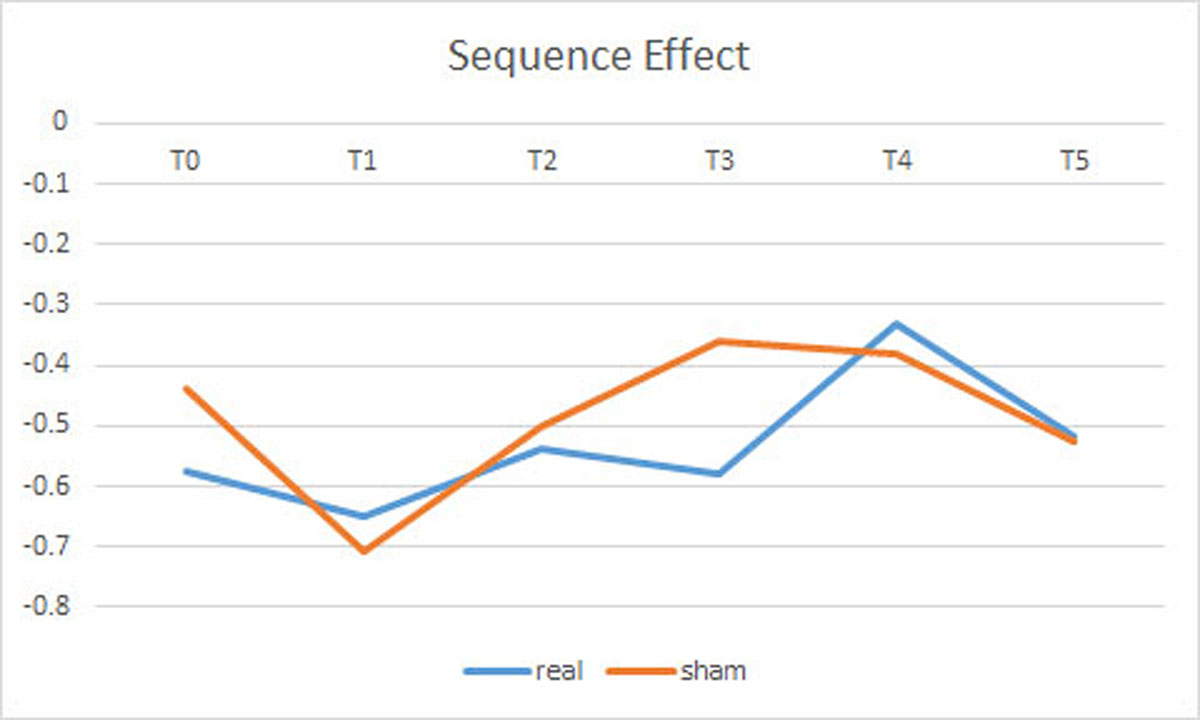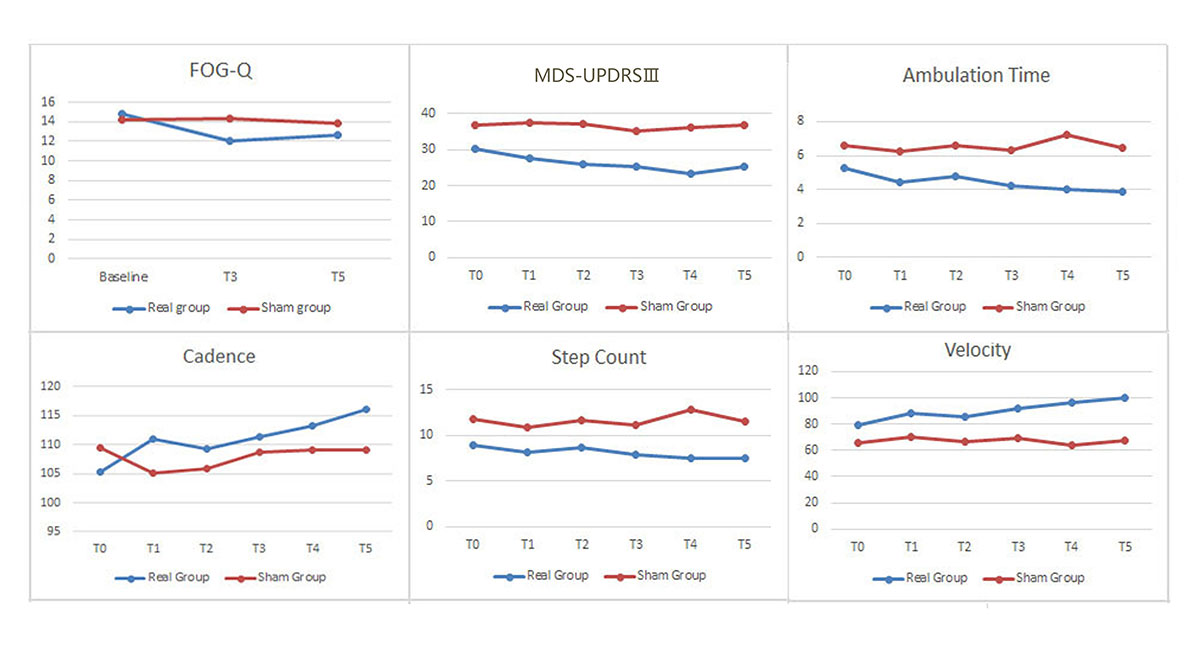Session Information
Date: Monday, September 23, 2019
Session Title: Physical and Occupational Therapy
Session Time: 1:45pm-3:15pm
Location: Les Muses Terrace, Level 3
Objective: To investigate the effect of repetitive transcranial magnetic stimulation (rTMS) on the sequence effect (SE) in Parkinson’s disease (PD) patients with freezing of gait (FOG).
Background: FOG, which is characterized by brief episodes of inability to step or by extremely short steps that typically occur on initiating gait or on turning while walking, is a disabling and common symptom in PD. The mechanisms underlying FOG are poorly understood. One possibility is that the decreased amplitudes might further destabilize normal gaits, and induce a vicious circle of progressively shorter step length, resulting in FOG. This progressive decrease in amplitude of sequential movements is called the SE. If the SE should be alleviated, the FOG might be improved. It has been demonstrated that levodopa has no impact on the SE. Repetitive transcranial magnetic stimulation (rTMS) is a noninvasive method to stimulate the human brain, and high-frequency facilitatory rTMS has been shown improving motor symptoms in PD patients. Though a previous study found that rTMS has no effect on the SE of hand movement, we are wondering whether rTMS could alleviate the SE in FOG.
Method: 28 PD patients with FOG received either real or sham 10-Hz rTMS over the supplementary motor area (SMA). The effects of rTMS on the SE, FOG and some gait parameters were evaluated in the “on” state, including MDS-UPDRS, FOGQ and NFOGQ. To measure the spatial and temporal gait parameters, an electronic walkway GAITRite was employed. Linear regression was used to determine the slope of each regression curve of walking. The averaged regression slope (b) for the 3 walk trails was used to represent the SE in each participant. Mixed effect model repeated measures were used estimate the effect of rTMS.
Results: Analysis of b values did not show significant group*visit interaction. Both real and sham rTMS had no effect on the SE [figure1]. Real rTMS had beneficial effects on FOG and some gait parameters, and this effect lasted for at least four weeks [figure2].
Conclusion: High-frequency rTMS over the SMA cannot alleviate the SE in PD patients with FOG. RTMS has a long-lasting beneficial effect on FOG, this effect is not achieved by alleviating the SE, but may be by improving other gait performances.
To cite this abstract in AMA style:
L. Gao, T. Mi, T. Wu, P. Chan. Repetitive transcranial magnetic stimulation does not improve the sequence effect in freezing of gait [abstract]. Mov Disord. 2019; 34 (suppl 2). https://www.mdsabstracts.org/abstract/repetitive-transcranial-magnetic-stimulation-does-not-improve-the-sequence-effect-in-freezing-of-gait/. Accessed April 3, 2025.« Back to 2019 International Congress
MDS Abstracts - https://www.mdsabstracts.org/abstract/repetitive-transcranial-magnetic-stimulation-does-not-improve-the-sequence-effect-in-freezing-of-gait/


